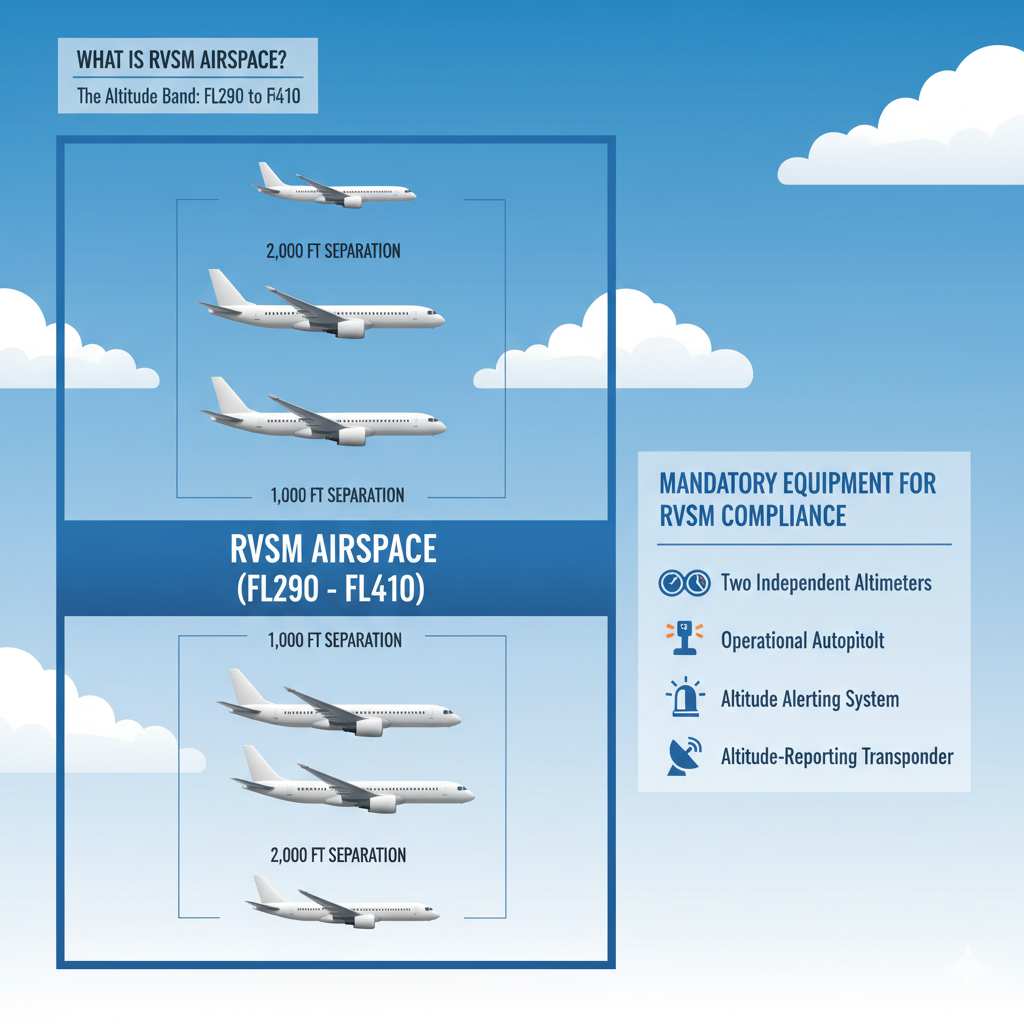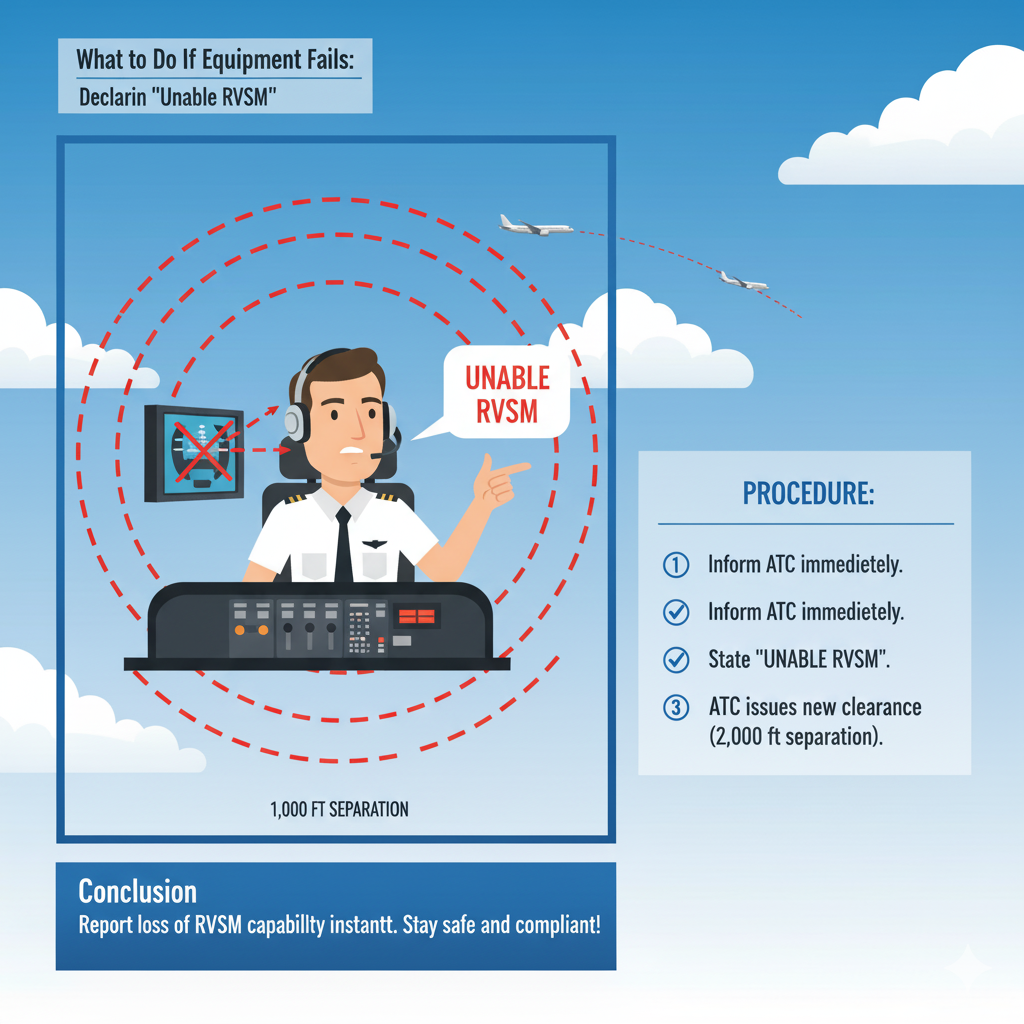RVSM Explained: Essential Equipment and Altitude Separation from FL290 to FL410
A Guide to Reduced Vertical Separation Minimum Airspace
Did you know that when you fly between Flight Level 290 (FL290) all the way up to Flight Level 410 (FL410), you are operating in a special environment known as RVSM airspace?
RVSM stands for Reduced Vertical Separation Minimum. It's a foundational concept in high-altitude aviation, allowing air traffic to flow more efficiently than ever before. This guide, based on a crucial quick lesson, breaks down exactly what RVSM means, why it exists, and the mandatory equipment you need to fly safely within it.
🎥 Watch the full lesson here:
What Is RVSM Airspace?

Normally, air traffic controllers maintain a 2,000-foot vertical separation between aircraft passing by each other in the upper flight levels.
However, when you are in RVSM airspace (between FL290 and FL410), the rules change. The standard tolerances are reduced, meaning aircraft can fly with only 1,000 feet of vertical separation between them.
This change is designed to accommodate the heavy traffic that is flying around the world. By halving the required space, RVSM effectively doubles the number of usable flight levels, significantly easing congestion and allowing more aircraft to fly at their most fuel-efficient altitudes.
The Altitude Band: FL290 to FL410
The RVSM envelope is precise:
-
Lower Limit: Flight Level 290 (29,000 feet)
-
Upper Limit: Flight Level 410 (41,000 feet)
-
Separation: 1,000 feet
If an aircraft is operating above FL410 or below FL290, the standard 2,000-foot separation rule applies once again.
Mandatory Equipment for RVSM Compliance
Because the altitudes are so close to each other, you must have specific, certified equipment on board. This equipment ensures your aircraft maintains altitude with the necessary precision and guarantees safety between other aircraft.
The equipment you need in RVSM airspace are:
| System | Requirement | Purpose |
| Two Altimeters | Must be independent of each other. | Provides redundancy and allows the pilot to cross-check readings for accuracy. |
| One Autopilot | Must be operational. | Essential for maintaining the assigned altitude within tight, required tolerances. |
| One Altitude Alerting System | Must be functioning. | Informs the pilots immediately when they are deviating from the set altitude, ensuring prompt correction. |
| One Transponder | Must be a functioning altitude-reporting transponder. |
Reports the aircraft's precise pressure altitude to Air Traffic Control radar systems.\ |
What to Do If Equipment Fails: Declaring "Unable RVSM"
Safety in RVSM airspace is non-negotiable. If at any time one of these four essential pieces of equipment fails or is suspected of working incorrectly, the pilot must act immediately.
The procedure is mandatory:
-
You must inform Air Traffic Control (ATC) as soon as possible.
-
You must explicitly state that you are "unable RVSM."
Once ATC is notified, they will immediately issue you a new clearance to separate your aircraft from surrounding traffic, restoring the standard 2,000-foot vertical separation for your flight. Never wait for ATC to ask—report the loss of RVSM capability instantly.
Conclusion
RVSM airspace is a modern marvel of operational efficiency, allowing air traffic to flow at peak performance worldwide. For professional pilots, compliance between FL290 and FL410 hinges on two key points: knowing the four mandatory equipment requirements and adhering strictly to the procedure of declaring “unable RVSM” the moment a system fails. Stay safe and stay compliant!
Elevate Your Knowledge with Our Aviation Courses
The principles of RVSM are foundational to modern commercial aviation. Whether you are studying for your Transport Canada exams, preparing for a type rating, or simply aiming to master every critical operational procedure, our courses provide the detailed knowledge you need to fly with precision and confidence.
Ready to fly higher and master complex airspace procedures?
➡️
